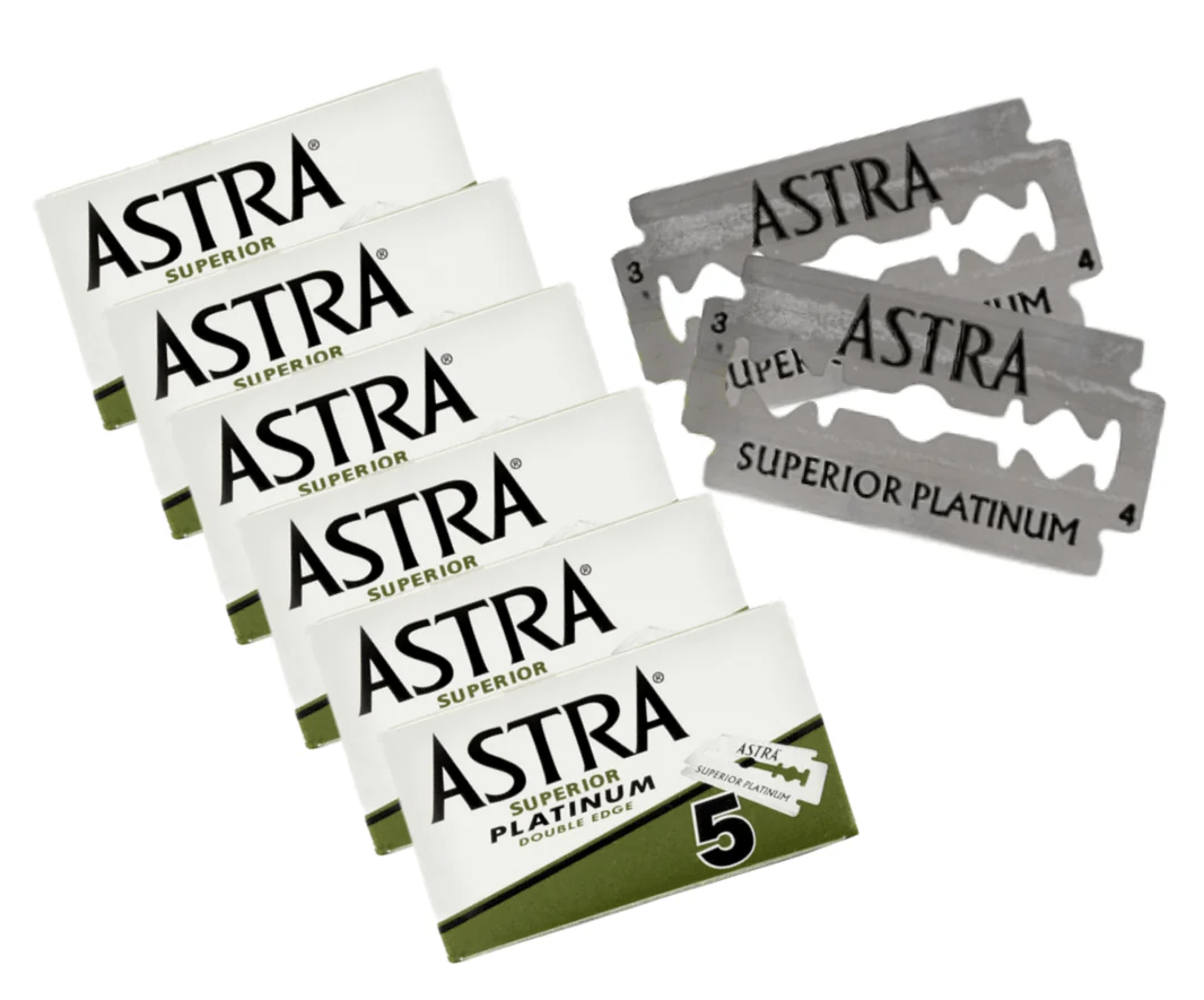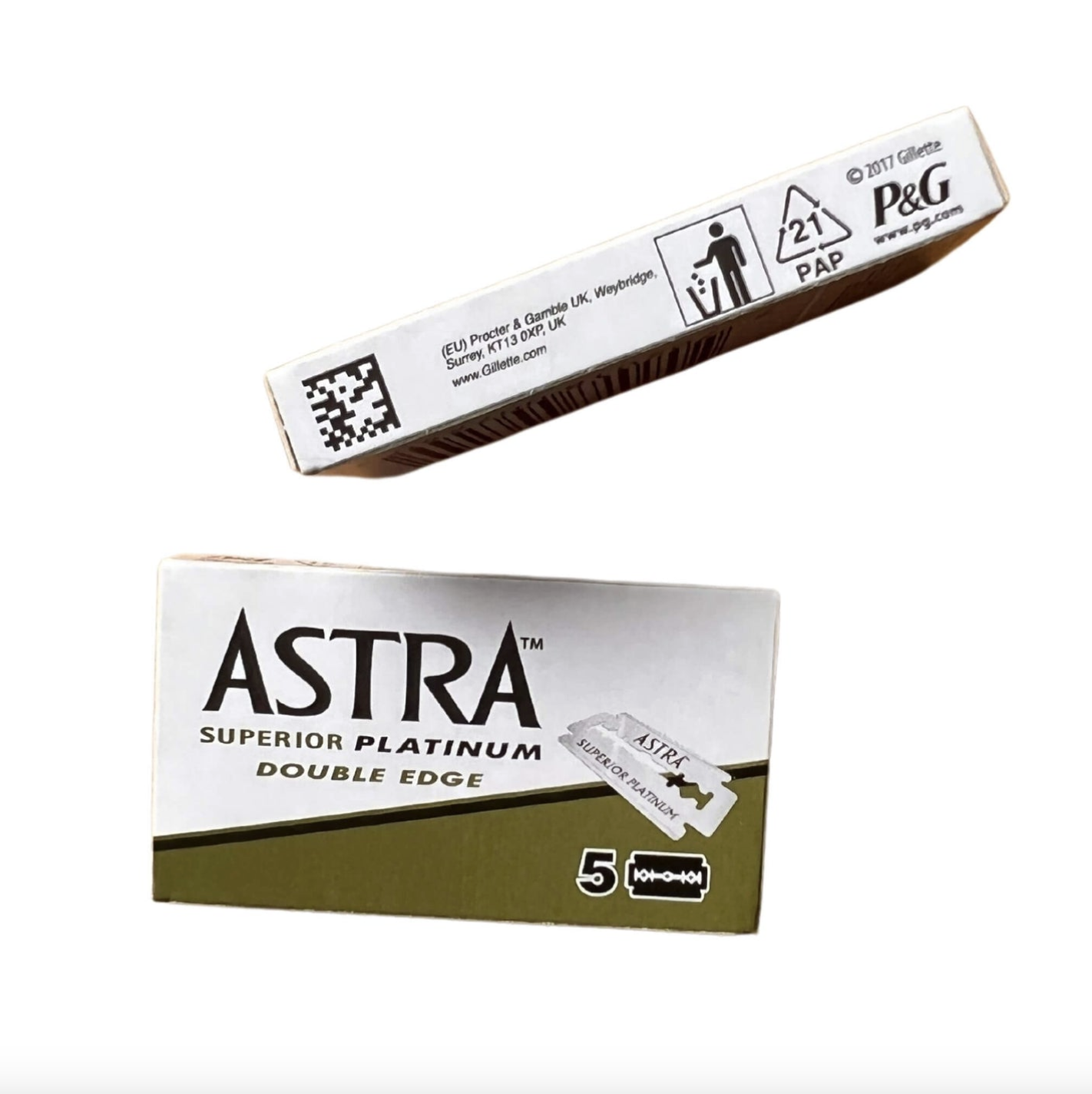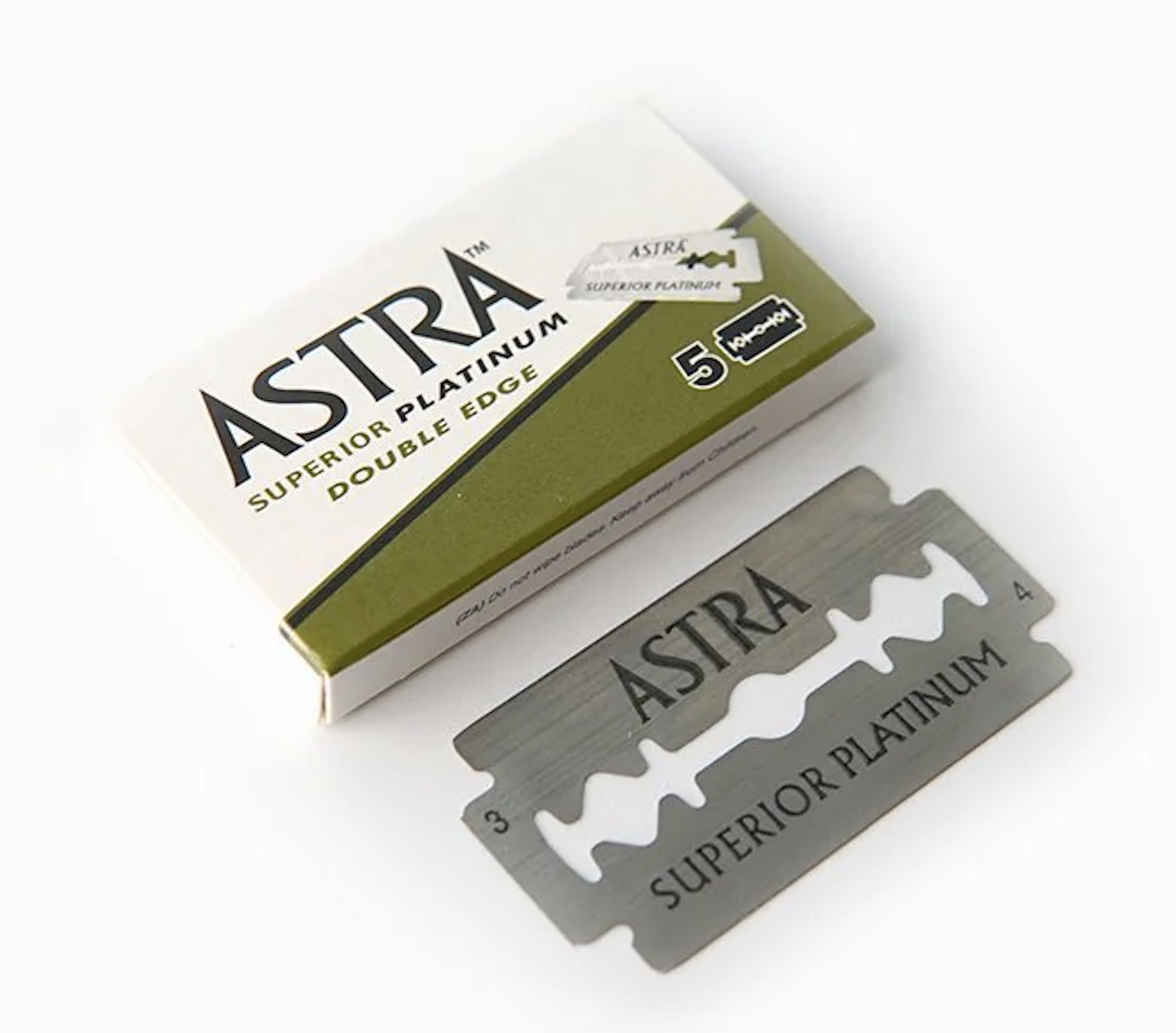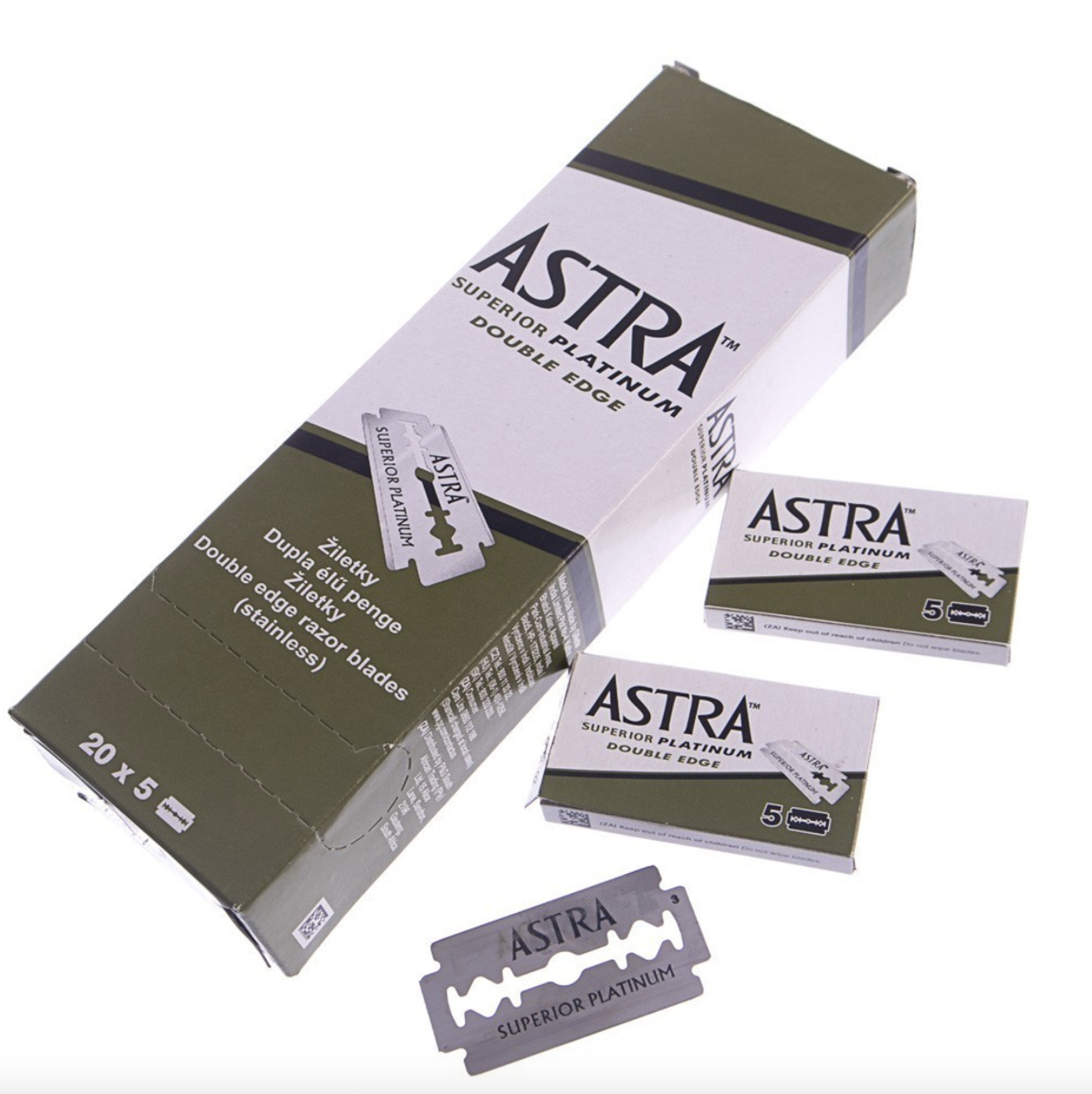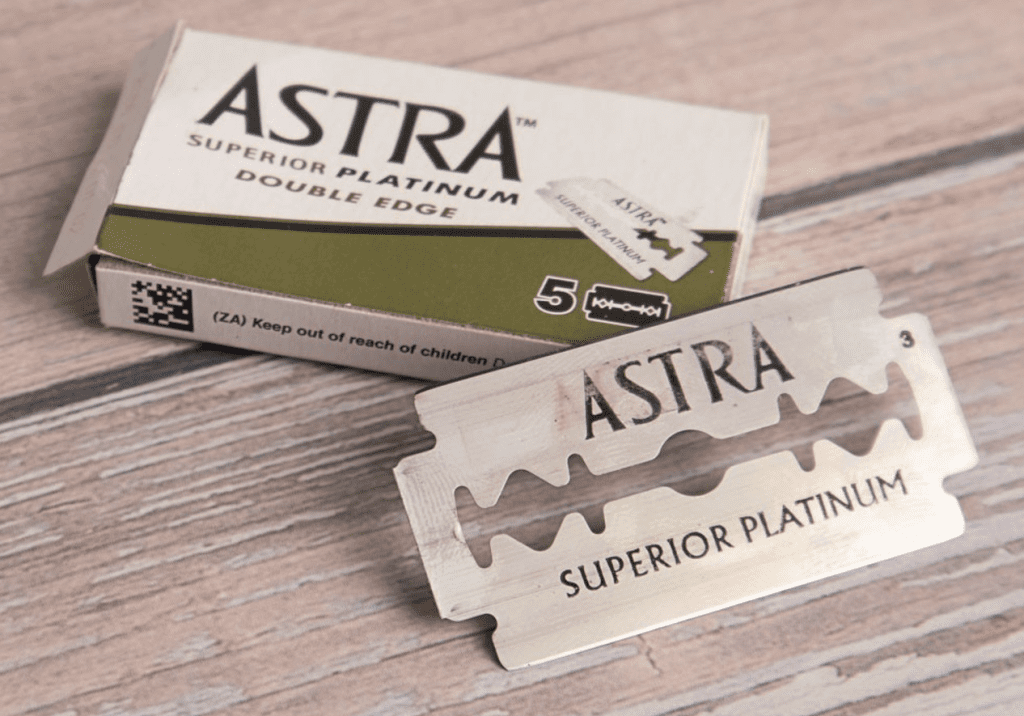Scoring sourdough bread is one of the most essential steps in the baking process, determining the final shape, crust texture, and controlled expansion of a loaf. Proper scoring ensures that steam releases in a predictable manner, preventing random ruptures while enhancing the aesthetic appeal of the bread. Achieving clean, precise cuts requires a sharp, smooth-gliding, and durable blade, and Astra Razor Blades have become a global favorite for this purpose.
At The Sourdough People, we are committed to providing bakers with the most in-depth, technically sound, and practical resources for mastering sourdough bread. Selecting the right scoring tool is a key decision, and Astra razor blades have proven to be among the best and most widely trusted blades in the world. Originally engineered for traditional wet shaving, Astra blades have been embraced by the artisan baking community for their razor-sharp edge, platinum-coated smoothness, extended durability, and affordability.
With Astra’s production shifting from Russia to India, there has been ongoing discussion about whether this has affected the quality, sharpness, and longevity of the blades. This comprehensive guide will explore everything about Astra razor blades for scoring sourdough, including their history, technical specifications, material composition, manufacturing differences, detailed thinking, and best practices for achieving superior scoring results.
Why Scoring Is Essential for Sourdough Baking
Scoring sourdough is not just a decorative step; it serves a functional purpose that directly impacts the final outcome of a loaf. As the dough enters a hot oven, gases expand rapidly, a process known as oven spring. Without a controlled weak point, this pressure can cause unpredictable ruptures, leading to irregular shapes, uneven crumb structures, or deflated loaves.
By creating precise, strategic cuts in the dough before baking, bakers can guide expansion in a predictable and controlled way, influencing both the visual appeal and internal texture of the bread.
Different scoring patterns serve different purposes:
- A single deep score along the center of a batard encourages a strong, dramatic ear that crisps up during baking.
- Shallow, curved scores create a more controlled expansion and a delicate crust design.
- Multiple, staggered scores help prevent excessive spreading and contribute to uniform oven spring.
Astra razor blades, known for their ultra-sharp edge and smooth cutting action, allow for precise scoring, making them one of the most effective, high-performance blades for artisan bakers.
Astra Razor Blades: History and Manufacturing
Origins in Czechoslovakia and the Gillette Acquisition
Astra razor blades were originally produced in Czechoslovakia, where they quickly gained a reputation for their stainless steel durability and finely honed edge. These blades became a preferred choice for traditional wet shaving due to their platinum-coated, ultra-smooth finish, which minimized irritation and maximized precision.
In 1996, Astra was acquired by Gillette, which moved manufacturing to St. Petersburg, Russia. Under Gillette’s leadership, Astra blades became one of the most widely recognized and distributed double-edge razor blades globally, not only in the shaving world but also among artisan bakers who sought an ultra-precise blade for scoring bread.
Transition to Indian Manufacturing and Performance Comparisons
As part of Procter & Gamble’s (P&G) global manufacturing strategy, Astra blade production was moved from Russia to India. This shift raised questions among bakers and wet shavers about whether the sharpness, coating quality, and longevity of the blades had changed.
Side-by-side comparisons of Russian and Indian Astra blades indicate no significant decline in quality. Many bakers report that the Indian-made Astra SP blades are just as sharp—if not slightly sharper—than their Russian counterparts.
Key observations from comparisons include:
- Sharpness: The Indian Astra blades are slightly sharper, making them more effective for precision scoring.
- Platinum Coating: The coating remains consistent, reducing friction and ensuring smooth cutting action.
- Durability: Astra blades continue to provide multiple uses per blade before dulling.
- Manufacturing Consistency: Quality control remains high, maintaining the precision engineering Astra is known for.
With the Russian versions becoming scarcer, the Indian Astra SP blades have become the primary version available to bakers worldwide.
Technical Specifications and Material Composition
Ultra-Sharp Edge for Clean, Effortless Cuts
Astra blades are among the sharpest platinum-coated stainless steel blades available. Their razor-fine edge ensures that dough is sliced cleanly, preventing the dragging or tearing often caused by dull blades.
Platinum Coating for Friction Reduction and Smooth Performance
The platinum-coated surface allows Astra blades to glide through dough effortlessly, making them especially effective for high-hydration sourdoughs that tend to stick or catch on lower-quality blades.
Universal Compatibility with All Bread Scoring Lames
Astra razor blades are standard double-edge blades, meaning they fit all curved and straight lames, making them ideal for various scoring techniques:
- Curved lames create arched scores, encouraging dramatic ear formation.
- Straight lames allow for deep, defined cuts, ensuring uniform oven spring.
Extended Durability and Cost-Effectiveness
Astra blades provide consistent performance over multiple loaves. Most bakers report that a single Astra blade lasts for 3–5 loaves, making them a high-value investment compared to other scoring tools.
Best Practices for Using Astra Blades for Sourdough Scoring
Using Astra razor blades effectively requires proper technique, handling, and maintenance to achieve the cleanest, most controlled scores while ensuring safety and extending the blade’s lifespan. Below is the most comprehensive list of best practices for bakers using Astra blades for scoring sourdough bread.
Use a Lame for Safety and Control
- Never hold the razor blade directly when scoring, as it poses a high risk of cuts and uneven scoring depth. Always use a lame (blade holder) for improved grip and control.
- A lame provides better leverage, allowing for fluid, uninterrupted motion while scoring.
- Holding a blade with bare fingers can result in accidental slippage, causing injuries or rough, inconsistent cuts on the dough.
Select the Right Type of Lame for Your Scoring Style
- A curved lame helps create arched scores that promote a lifted ear on the loaf. This is ideal for batards and baguettes.
- A straight lame is better suited for deep, direct cuts, often seen on rustic boules or loaves where expansion needs to be broader rather than lifted.
- Test both types of lames to find which works best for your preferred scoring style.
Replace the Blade Regularly for Maximum Sharpness
- A dull blade drags and tears rather than cutting cleanly, leading to uneven expansion and rough crust edges.
- Replace the blade after scoring 3–5 loaves, or sooner if working with high-hydration doughs (above 75%) that dull the blade faster.
- If the blade starts to hesitate, stick, or leave jagged scoring lines, replace it immediately to maintain precision.
Store Unused Blades in a Dry, Safe Location
- Keep unused Astra blades in their original wax paper wrapping to protect the sharp edge from exposure to moisture and air.
- Store in a sealed container or dry drawer to prevent corrosion or dulling over time.
- Avoid leaving blades in open air or humid environments, as exposure to moisture can degrade the fine edge.
Dispose of Used Blades Properly to Prevent Injuries
- Do not throw used blades loose into the trash, as they can pose a serious injury risk.
- Collect used blades in a blade bank, tin can, or sealed disposal container to ensure safe handling.
- Many local recycling programs accept metal razor blades, so check for disposal programs in your area.
Score with Confidence – Use Smooth, Quick Movements
- Light, swift, and confident cuts ensure clean, precise scores that direct oven spring effectively.
- Hesitating or moving too slowly can cause dragging, uneven cuts, or tearing of the dough surface.
- Let the sharpness of the Astra blade do the work—excess pressure is unnecessary and can cause the blade to sink too deep, affecting expansion.
Keep Your Scoring Angle Consistent for Predictable Expansion
- Holding the blade at a shallow angle (30–45 degrees) encourages a more dramatic ear formation.
- Holding the blade perpendicular (90 degrees) to the dough results in a deeper, more direct expansion but less ear formation.
- Practicing with different angles allows for greater control over scoring effects and final loaf structure.
Adjust Scoring Depth Based on Loaf Size and Hydration
- High-hydration doughs (above 75%) require shallower scores (about 1/8 inch deep) to prevent the blade from dragging and collapsing the structure.
- Lower-hydration doughs or dense loaves may require deeper scoring (up to 1/4 inch) to allow for sufficient expansion.
- Experiment with scoring depths based on the type of sourdough you’re baking to achieve optimal results.
Score Just Before Baking for Maximum Effectiveness
- Scoring too early (before final proofing is complete) can cause the cuts to seal back up, resulting in poor expansion.
- Score immediately before placing the dough in the oven to take full advantage of oven spring.
- For retarded (cold-proofed) doughs, scoring directly out of the fridge is easier as the dough is firmer and less sticky.
Avoid Overhandling the Dough Before Scoring
- Too much handling before scoring can cause deflation and reduce surface tension, which weakens the scoring effect.
- Keep the dough lightly floured to prevent excessive sticking but avoid too much flour, which can cause the blade to skip or slide.
- Shape the dough properly to build surface tension, making scoring easier and ensuring clean cuts.
Customize Your Scoring Style for the Desired Loaf Outcome
- A single deep score along the center of a batard encourages a large, pronounced ear and focused expansion.
- Multiple shallow scores create a decorative crust pattern while controlling expansion more evenly.
- Crisscross or lattice scoring can prevent excessive spread in loaves with weaker structure.
Clean Your Lame and Blade After Each Use for Longevity
- While Astra blades are disposable, the lame itself should be wiped clean to prevent dough buildup.
- If the blade is still sharp but has slight dough residue, gently wipe it with a dry cloth before reusing.
- Store your lame in a dry place to prevent moisture buildup, which can lead to premature rusting of the blade holder.
Learn to Read the Dough’s Surface for Perfect Scoring
- A properly proofed dough will be slightly elastic yet firm, making it ideal for scoring.
- If the dough is too tight, scoring will be difficult, and the cuts may not open properly.
- If the dough is too slack or overproofed, scoring may cause excessive collapse or spreading.
Adjust for Climate and Humidity When Scoring
- In humid conditions, dough can become stickier, requiring lighter flour dusting to prevent the blade from sticking.
- In dry conditions, the dough surface may form a hard skin, requiring slightly deeper scores to ensure proper expansion.
- Cold-proofed doughs are easier to score because they hold their shape better, reducing stickiness and increasing control.
Keep Extra Astra Blades on Hand to Avoid Dull Cuts
- Running out of sharp blades in the middle of a baking session can result in poor scoring performance.
- Always have extra Astra blades available to replace dull ones when necessary.
- Store blades in a designated dry container to prevent damage before use.
Consider Using Different Scoring Techniques for Different Breads
- Baguettes typically require one or two long, angled scores to ensure a proper open crumb.
- Rustic sourdough loaves often benefit from multiple artistic cuts, allowing for balanced expansion.
- Enriched doughs, such as brioche, may require softer scoring or alternative slashing methods to avoid excessive tearing.
Practice Makes Perfect – Keep Experimenting
- Scoring is a skill that improves with experience and repetition.
- Experiment with different angles, depths, and scoring patterns to see how they affect loaf expansion.
- Keep track of what works best for different flour types, hydration levels, and proofing techniques.
By following these best practices, you can maximize precision, control, and consistency when scoring sourdough with Astra blades. These techniques will help you achieve cleaner scores, better-defined ears, and improved oven spring, ensuring every loaf bakes to its full potential. If you have additional techniques or experiences using Astra blades for scoring sourdough, share them in the comments!
Common Questions About Astra Razor Blades
Are Astra razor blades the best option for scoring sourdough bread?
Astra razor blades are considered one of the best scoring tools available for sourdough baking due to their razor-sharp edge, smooth glide, platinum coating, and durability. They are favored by professional and home bakers alike for their precise, clean cuts, which help control oven spring and prevent unwanted ruptures in the crust. Compared to dedicated bread-scoring knives, Astra blades allow for much finer, sharper scoring, leading to better-defined ears and improved loaf structure. Their affordability and wide availability make them a top choice in the baking world.
How do Astra blades compare to other razor blades used for scoring bread?
Compared to other double-edge razor blades, Astra blades strike the ideal balance between sharpness, smoothness, and forgiveness. Feather blades, for example, are extremely sharp but may be too aggressive, leading to overly deep cuts or excessive tearing. On the other hand, Derby and Wilkinson Sword blades tend to be duller or thicker, which results in dragging and an uneven scoring pattern. Astra provides a perfect middle ground—sharp enough for precise scoring but smooth enough to prevent unwanted damage to the dough’s surface.
How long does an Astra razor blade last when scoring sourdough?
The longevity of an Astra blade depends on the type of dough being scored, the level of hydration, and how much resistance the dough provides. Generally, a single Astra blade lasts between 3 and 5 loaves before it starts to dull. High-hydration doughs (above 75% hydration) tend to wear down blades faster due to their elastic and sticky nature. Some bakers replace their blade after every 2–3 loaves to maintain the cleanest, most precise cuts possible. A dull blade will begin to drag rather than slice, creating uneven scores and affecting the final shape of the bread.
Should Astra blades be used with a lame or by hand?
Astra blades should always be used with a lame for safety, control, and precision. A lame provides a stable grip, reducing the risk of accidental slips that could lead to uneven scoring or injury. Holding a razor blade directly not only increases the risk of cuts but also makes it harder to achieve consistent scoring angles. A lame also helps maintain hygiene, preventing contamination from direct hand contact. Using a lame allows for fluid, controlled movements, ensuring that scoring is both effective and safe.
What is the difference between a curved and a straight lame for scoring bread?
Astra blades fit into both curved and straight lames, each of which serves a specific purpose:
- Curved Lame: Designed to create arched scores, helping form a more pronounced ear on sourdough loaves. This is the preferred choice for batards and baguettes, where the crust needs to open in a controlled manner.
- Straight Lame: Used for deep, direct cuts, often seen in boules and rustic country loaves. It allows for a more expansive, dramatic oven spring without creating as much of a lifted ear.
Choosing between the two depends on the desired scoring effect and the final shape and texture of the loaf.
How does the platinum coating on Astra blades improve scoring?
The platinum coating on Astra blades provides a smoother cutting experience by reducing friction between the blade and the dough. This coating prevents the blade from sticking or dragging, which is especially useful when scoring high-hydration sourdoughs that tend to be more elastic and resistant to cutting. The platinum finish also acts as a protective layer, increasing the blade’s longevity by preventing corrosion. This ensures that the blade remains sharp and effective for multiple uses.
How do Indian-made Astra blades compare to Russian-made Astra blades?
When Gillette moved Astra blade production from Russia to India, many bakers and shaving enthusiasts conducted direct comparisons. The results indicate that Indian Astra SP blades are at least as sharp, if not slightly sharper, than the Russian versions. The platinum coating and steel composition remain unchanged, ensuring the same friction-free cutting performance. In terms of durability, both versions provide the same longevity, lasting multiple loaves before dulling. With the Russian-made Astra blades becoming scarce, the Indian-made versions are now the standard Astra blades available worldwide.
How should Astra blades be stored and disposed of?
Proper storage and disposal of Astra blades are essential for safety and maintaining blade performance. Unused blades should be stored in their original wax paper packaging to prevent exposure to moisture, which can lead to oxidation. Blades should be kept in a dry, room-temperature environment to ensure their sharpness is preserved.
For disposal, never throw used blades directly into the trash, as they pose a serious injury risk. Instead, collect used blades in a blade bank, tin can, or a sealed disposal container. Many municipalities offer metal blade recycling programs, making it possible to dispose of Astra blades in an environmentally responsible manner.
What types of dough are Astra blades best suited for?
Astra blades perform exceptionally well on all types of dough, but they are particularly effective on high-hydration sourdoughs, where a clean, precise cut is necessary for controlled oven spring. They are commonly used for:
- Traditional artisan boules, batards, and baguettes
- Hybrid doughs incorporating rye, spelt, or whole wheat
- Ciabatta and focaccia, where surface scoring guides expansion
- Decorative scoring patterns for intricate crust designs
The blade’s sharpness ensures that even firm, lower-hydration doughs can be scored effectively without unnecessary compression.
Are Astra blades reusable for other kitchen tasks?
While Astra blades are designed primarily for scoring sourdough and shaving, some bakers repurpose them for precision kitchen tasks, including:
- Scoring laminated doughs, such as croissants or puff pastry
- Creating decorative slashes on pie crusts
- Trimming fresh herbs or microgreens
However, once a blade has been used for scoring sourdough, it should not be reused for other food tasks due to possible contamination from flour, yeast, and dough residue. If a blade is repurposed, it should be dedicated to a single task to maintain hygiene.
Why do professional bakers prefer Astra blades over traditional bread knives for scoring?
Professional bakers favor Astra blades because they provide a level of sharpness and precision that bread knives cannot achieve. Serrated knives tend to compress the dough before cutting through it, which results in rough, jagged edges and uncontrolled expansion. In contrast, Astra razor blades create a clean, ultra-thin incision that allows the dough to expand naturally and evenly.
Additionally, bread knives cannot achieve the fine, intricate scoring patterns that are possible with a razor blade. Astra blades allow bakers to experiment with artistic designs, deep or shallow scoring, and highly controlled oven spring, making them an essential tool in any serious baker’s arsenal.
Can Astra blades be used for non-baking applications?
Yes, Astra blades are commonly used outside of baking for wet shaving, precision crafting, woodworking, and model-making. However, it is important to dedicate separate blades for each task to maintain hygiene and prevent cross-contamination.
Final Thoughts on Astra Blades
Astra razor blades have earned their place as one of the most reliable and effective tools for scoring sourdough bread. Their razor-sharp precision, smooth cutting ability, extended durability, and cost-effectiveness make them the go-to choice for artisan and home bakers alike.
Even with the shift in production from Russia to India, Astra blades continue to be one of the most trusted global brands for both wet shaving and bread scoring. Their high performance, affordability, and accessibility make them a top product recommendation from The Sourdough People.
For bakers looking to improve their scoring technique, using Astra blades is one of the easiest and most effective upgrades to enhance the quality, structure, and beauty of their sourdough loaves.
Have you used Astra blades for sourdough scoring? Let us know your experience in the comments!
Where to Buy Astra Blades Online in Canada?
Amazon
Walmart
eBay
Google
